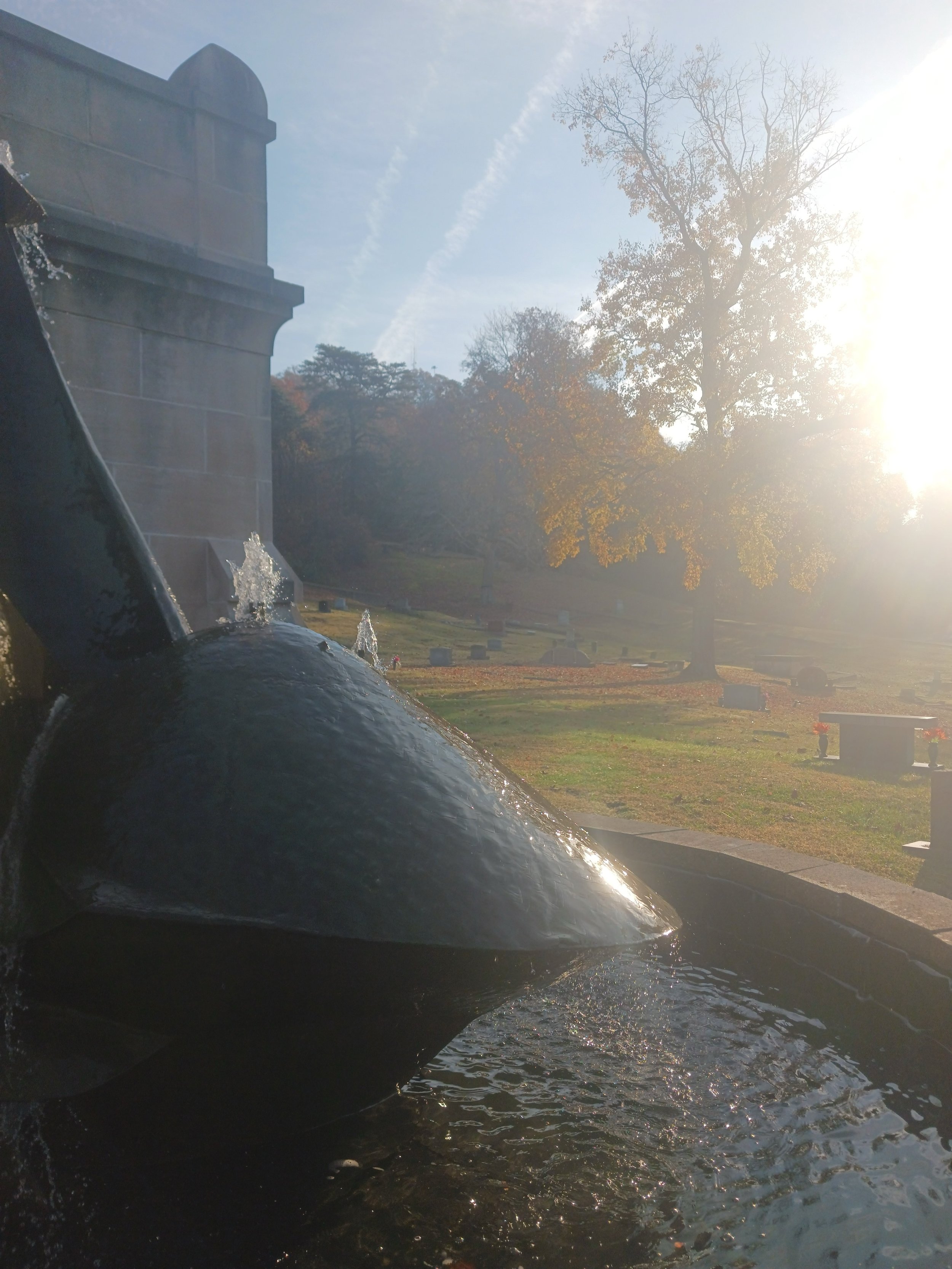
About us
The Ratrie Arboretum is on a ridge overlooking the state Capitol and the Kanawha River. The City of Charleston first acquired 20 acres of land in 1869 for Spring Hill Cemetery. Subsequent purchases brought the size to 168 acres, the land is designated also as a City Park. Some of the 1,400 trees in our Arboretum inventory date from the early acquisition period.
Friends of Spring Hill Cemetery Park and Arboretum is a 501(c)3 organization founded in 2001. It works with the City of Charleston to promote the park, preserve and restore markers and structures, beautify with plantings and conduct tours and educational programs. Recent successes have included the installation of two sculptures in 2023, a fountain by Robert Cronbach which was formerly located at the Main Kanawha County Library before its renovation, and a donated eight foot sunflower sculpture by Lloyd Enoch.
The Ratrie Arboretum is the culmination of a 30-year quest by the late Mary Price Ratrie, a founding member of the Friends of Spring Hill Cemetery Park, for a living museum of trees for southern West Virginia. The City of Charleston owns the property and graciously provides labor and equipment to care for the trees and plants in the Arboretum.
Mayor Amy Shuler Goodwin, Spring Hill Cemetery Superintendent Larry Ford, members of the Ratrie family and Dr Rick Franke, President of the Friends of Spring Hill Cemetery Park & Arboretum, officially opened the Mary Price Ratrie Arboretum on October 14, 2021.
"The Mary Price Ratrie Arboretum will provide educational opportunities for our students and be another beautiful outdoor experience for visitors and those who live in our Capitol City," said Mayor Amy Shuler Goodwin. "Thank you to the Ratrie family and the Friends of Spring Hill Cemetery Park & Arboretum for your dedication to this project."
Honoring Two Formidable Woman
Mary Price (Dickenson) Ratrie (1914-2010). Mary Price Ratrie is not buried at Spring Hill, but left a mark on the Kanawha Valley like generations of her family before.
Ratrie was born in Malden, the granddaughter of John Quincy Dickinson. The Dickinson family, which through its manufacture of salt, coal mining, banking activities and philanthropic contributions, helped develop and shape Charleston and the Kanawha Valley.
She lived in Florida, but returned to the valley after her mother's death and became involved in the various family enterprises After the death of her husband, Turner Rust Ratrie, and the death of her son who managed the family's business after his father's death, she quietly, but very effectively, stepped into the role of business and community leader.
She was a lover of gardening and a supporter of education, the arts and the beautification of Charleston. Her love of gardening led to the establishment of TerraSalis Garden Center, on the family farm in Malden and its associated commercial landscaping company Terra care. When Terrasalis closed, it became a wedding venue, and a return to its original use, with the formation of the J.Q. Dickenson Salt-Works Company happened.
Mrs Ratrie was a funny and generous women. She swam daily to a late age. She canoed at times from Malden to her place of worship St. Johns Episcopal Church in Charleston. She established her own beautiful Rose Garden at her home in Malden. On garden tours, she may sometimes have sneaked a cutting from a desirable plant home in her handbag.
A native Cornus florida / Dogwood is planted in the Old Circle opposite the Donnally Graves in her honor.
Allen Carter Rohdeler Giltinan (1930-2020). Many of Spring Hills Roads are named after those who lost their lives in service. One exception is ‘Carter Lane’, a green lane that twists between Historic Sections 30 and 31. It is named after another Friends of Spring Hill founder member and former City Beautification Director, Carter Giltinan. Carter was an avid gardener, who was a member of Kanawha Garden Club and also a manager of the former Terrasalis Garden Center in Malden. Carter is also remembered on the Carriage Trail by a monument from her own garden, as well as a garden space at Kanawha United Presbyterian Church being named in her honor. Look along the lane for several Aesculus / Buckeye cultivars. Carter is buried in the Smith plot in Historic Section 30.





